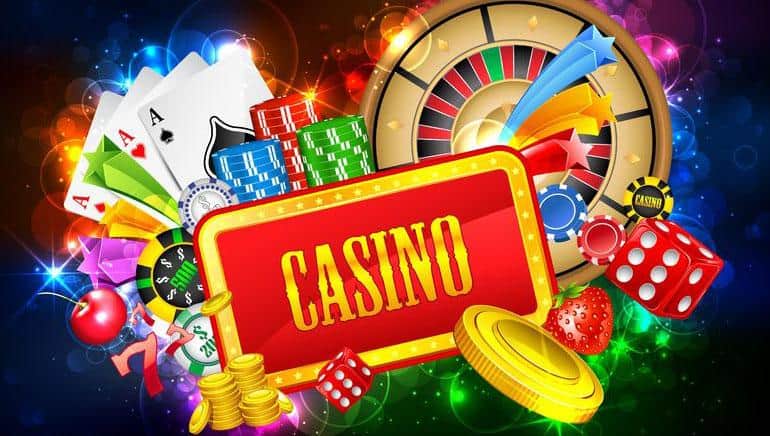
Within a vibrant and stimulating world of casinos, wherein luck and tactics intertwine, color and design play a key role in drawing in gamblers. From the moment visitors step into a casino or log into a gaming platform, they are immersed in a visual feast that captures their attention and lures them to discover more. Vivid colors, engaging graphics, and creative layouts are carefully crafted to create an environment of thrill and expectation, ultimately enhancing the gaming experience.
As gamblers move through the dynamic landscape of casino games, they come across a variety of designs that not only serve visual purposes but also influence emotions and decision-making. Colors like red and yellow symbolize riches and fortune, while calm blues and greens can create a more relaxed environment. Grasping how these elements function together enables casinos to create an welcoming and energizing atmosphere that encourages players to interact with the games, invest additional time at the tables, and boost their overall enjoyment.
The Science of Tint in Gambling Games
Hue plays a critical role in the design of gambling games, shaping players’ emotional states and actions. Vivid and bold shades, such as crimson and gold, are often used to stimulate thrill and capture focus. These shades create a sense immediacy and dynamism, encouraging gamblers to involve themselves more enthusiastically with the game. By thoughtfully selecting tints, creators aim to evoke feelings of satisfaction and expectation, which can enhance the complete gaming experience.
Distinct colors also have psychological associations that can affect how participants perceive their possibilities of victory. For example, green is often associated with fortune and wealth, making it a well-liked choice in activities like roulette and poker tables. This association can result participants to feel more positive and self-assured in their play, ultimately inspiring them to wager more. Comprehending these associations allows game creators to design environments that enhance player happiness and retention.
Moreover, the design of gaming interfaces often uses blended colors and contrasting shades to direct player actions. For example, successful results may be highlighted with bright, opposing shades, creating a visual cue. This method reinforces successful results and promotes repeated engagement. By leveraging color psychology, gaming venues can develop games that not only attract players but also hold them interested and committed in their play experience.
Creative Features that Attract Gamers
The visual appeal of gambling games is primarily influenced by the implementation of bold colors. Lively and striking colors are strategically chosen to create an appealing atmosphere that grabs interest. For example, crimson and golds often signify good fortune and wealth, which is why they are prevalent in the color schemes of slot machines and game surfaces. These colors not only draw players in, but they also evoke emotions related to excitement and expectation, enhancing the overall gaming experience.
In addition to color, the design and organization of casino games play a crucial role in player attraction. Games are designed to be intuitive, ensuring that players can quickly understand the guidelines and mechanics. User-friendly interfaces, along with captivating graphics and animations, help maintain gamer interest and promote extended play sessions. The physical elements, such as the texture of the controls and the audio of the games, also contribute to a holistic sensory experience that keeps players engaged.
In conclusion, thematic elements in gaming design can significantly influence gaming decisions. Many casino games are inspired by popular culture, fairy tales, or adventure themes, featuring symbols and characters that resonate with players. These themes create a sense of engagement and connection, making each game feel distinct. When players feel a bond to the concept, they are more likely to opt for that game over others, leading to higher participation and enthusiasm within the casino environment.
Case Studies: Effective Gambling Table Game Designs
One prime example of effective gambling game design is the well-known slot machine series based around popular movies. Games such as those based on the The Wizard of Oz and Game of Thrones utilize vibrant colors and high-quality graphics to immerse players in well-known narratives. The application of moving visuals and entertaining sound effects grabs the focus of players, establishing an psychological connection to the theme. This strategy merely encourages longer play but also enhances the overall gaming experience, yielding increased player retention.
Another notable case is the application of color in table games like blackjack and the wheel. Casinos often design these games with dark reds and greens, colors traditionally associated with luck and wealth. For instance, the green felt on a 21 table provides a soothing effect, while the red accents in roulette invite thrill. This intentional use of color helps to foster an inviting atmosphere that encourages players to participate, addressing their psychological impulses and increasing their enjoyment.
Finally, online casino games that include social features and bright, dynamic designs have seen remarkable success in engaging players. Games like Zynga Poker and Slotomania leverage striking colors and playful animations to create an inviting online environment. The inclusion of leaderboards, social sharing options, and in-app rewards promotes competition and community, attracting players in for longer sessions. Such designs not just make the games visually attractive but also emphasize social interaction, a crucial factor in player retention and engagement within digital casino environments. jdbyy
